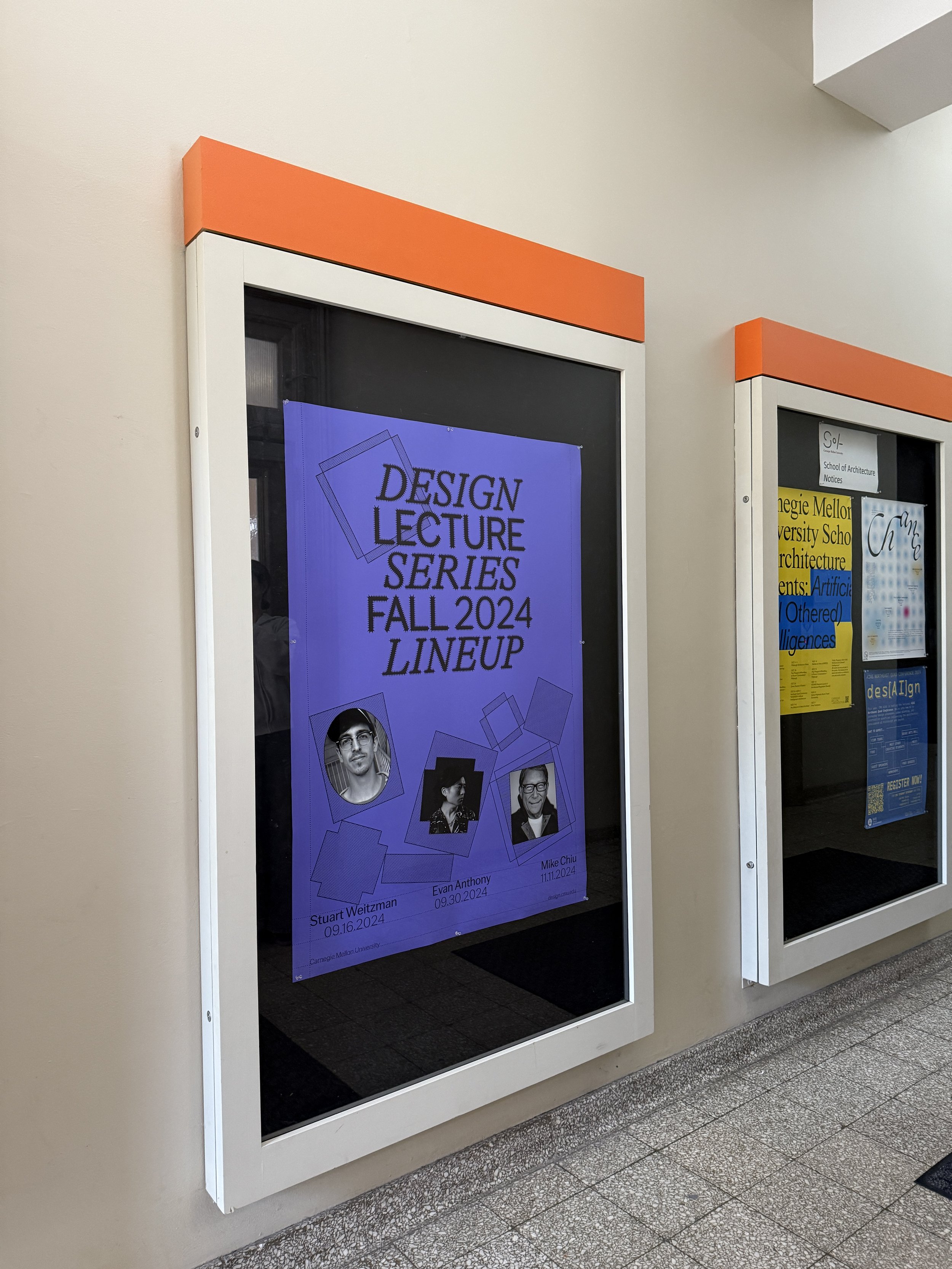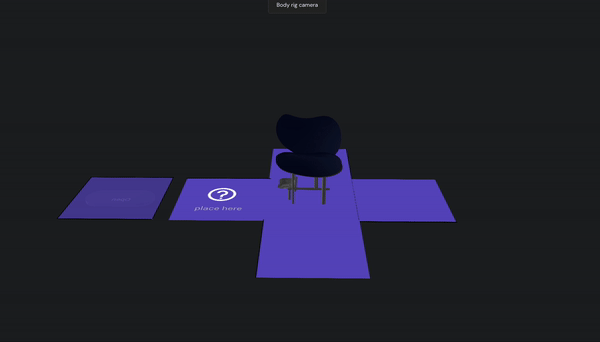Mixed Reality: Lecture Series
An immersive mixed reality experience designed to transform a traditional 2D poster into an interactive 3D encounter that encourages student engagement with CMU’s annual Design Lecture Series. This project reimagines how public displays can inform and inspire through emerging MR technologies.
Duration
3 weeks, Fall 2024
Team
Joy Leung
Role
AR/VR
Experience Design
Interaction Design
Bezi
Adobe AfterEffects
Figma
Tools
Picking up a box and interacting with the box by swiping to learn more about the lecture and speaker
Making a fist shrinks the box to pocket size, allowing users to take it as a memorable artifact of the experience and a reminder to attend the lecture
Although the lecture series brings world-class designers and thinkers to campus, the current poster format offers a passive, surface-level experience. It lacks interactivity, depth, and emotional connection—key elements needed to spark curiosity and motivate students to attend. Without a compelling way to explore the content, the poster becomes background noise in a busy hallway, and its potential to connect students with meaningful events goes unrealized.
The Problem
Transform a passive poster into an engaging mixed reality experience that invites exploration and encourages lecture attendance.
Our goals included:
Capture student attention in a busy hallway setting through spatial interaction.
Enrich speaker discovery by allowing students to explore related artifacts and work.
Use intuitive eye-tracking and gesture-based input to create a smooth user experience.
Provide a takeaway element to reinforce memory and attendance motivation.
Prototype a future-facing interaction model for how public information can be experienced.
Ideation
User Journey Map
To ground our concept in user-centered thinking, we created a user journey map outlining the key phases of interaction: Discovery, Unpacking, and Memory. This helped us visualize how a passerby might transition from noticing the MR-enhanced poster to engaging with lecture content and leaving with a memorable takeaway. By mapping out user goals, actions, and emotional responses at each step, we identified opportunities to introduce intuitive interactions.
Goal
Students often pass by the Design Lecture Series poster without engaging, missing the opportunity to discover inspiring talks and speakers.
Prototyping
We used Bezi to prototype our mixed reality interactions and bring our concept to life in a spatial environment. Bezi allowed us to simulate key gestures—such as gaze-based highlighting, box rotation, and object scaling—directly within an MR context. By viewing the experience through a mobile device or headset, we could better evaluate how each element felt in relation to the physical display case.
Final Design
Concept Video
Key Interactions
Eye-tracking highlights each box upon gaze, instantly providing a preview of the speaker's details
Opening the box reveals the designer's artifact, which can then be placed on different planes to uncover additional information.
User Testing
Throughout the process, we tested our interaction with our peers using tablets, mobile devices, and headsets. These helped us identify areas for improvement, such as enhancing text readability, adjusting object scale and placement, and adding additional UI cues to guide user actions.
Reflection
This project challenged me to rethink how students engage with public information in physical spaces, using mixed reality to turn a static poster into a layered, interactive experience. I gained valuable insight into spatial interaction, gesture design, and prototyping with emerging MR tools like Bezi. The process pushed me to think critically about how design can bridge digital and physical environments, and I am excited by the potential of these experiences to make information more meaningful and memorable.
For future considerations:
Expand artifact types and media
Incorporate multimedia elements—such as audio clips, videos, or motion graphics—so users can hear or see speakers discuss their work in their own voice.Introduce functional and playful cubes
Design certain cubes with unique functions beyond information display. For example, a Flashlight Cube could cast a virtual light beam to reveal hidden content on the display.Calendar integration
Explore interactions that allow users to virtually add a cube to their digital calendar. This would transfer lecture details (time, date, location) directly into their schedule, helping bridge the MR experience with real-life planning.
















